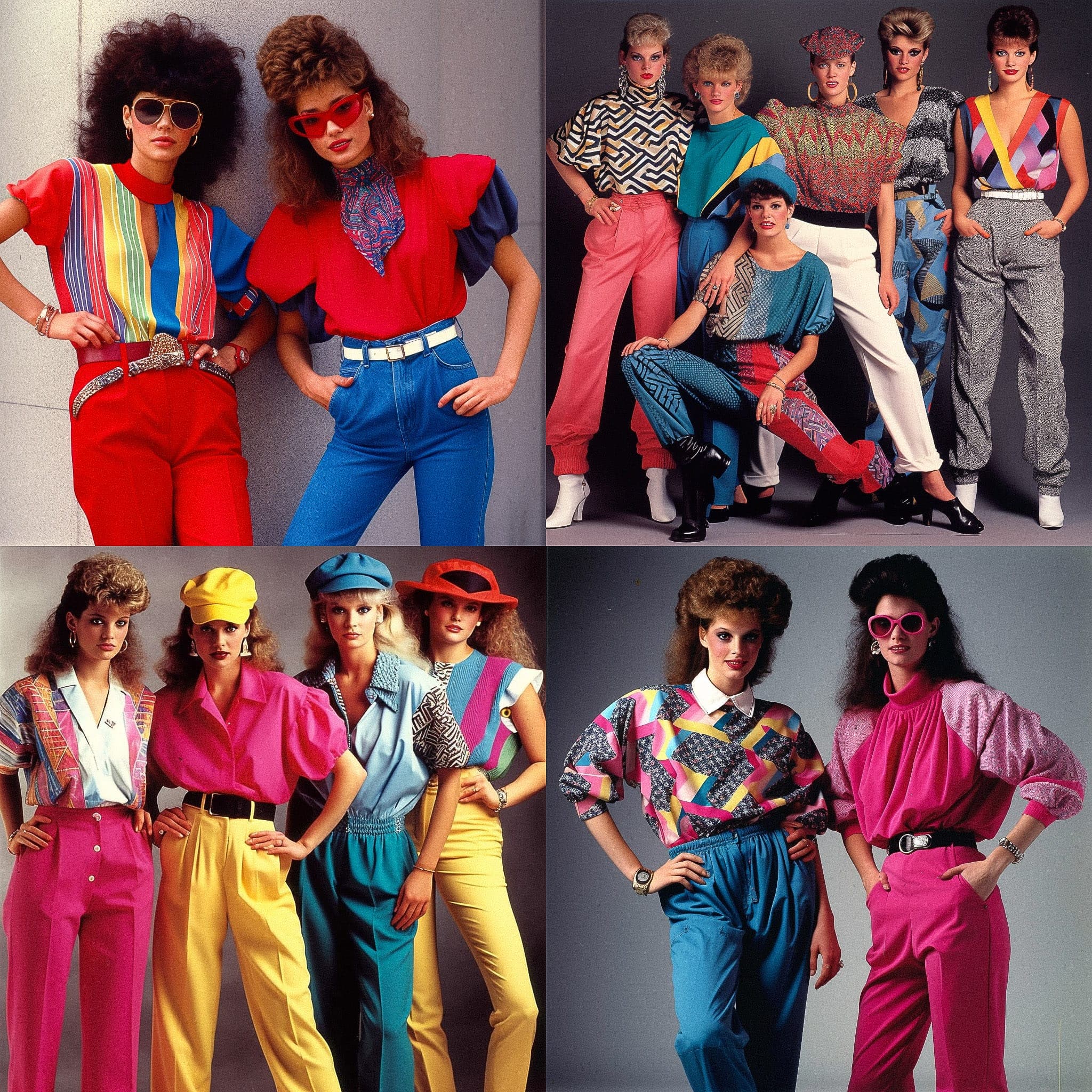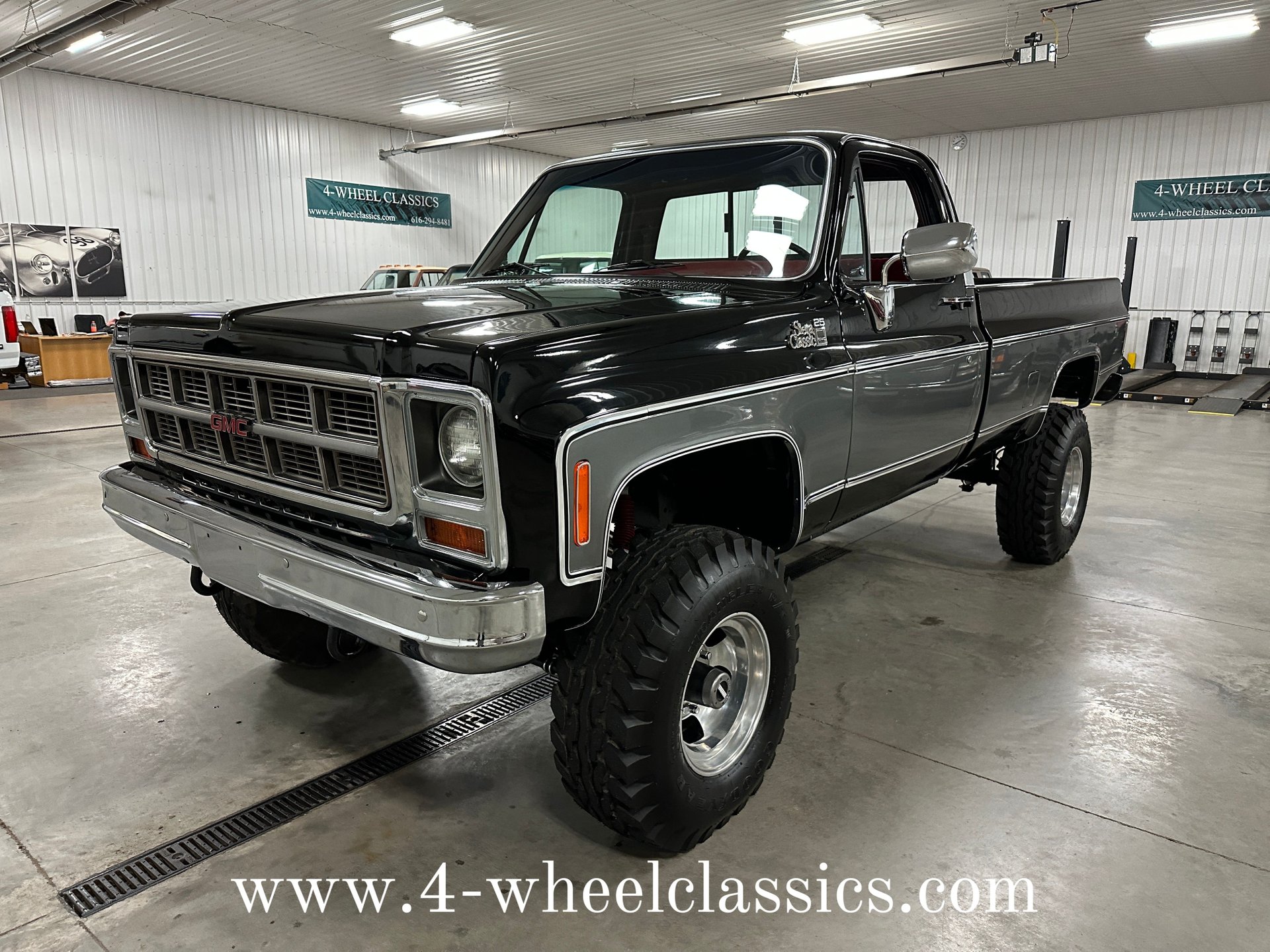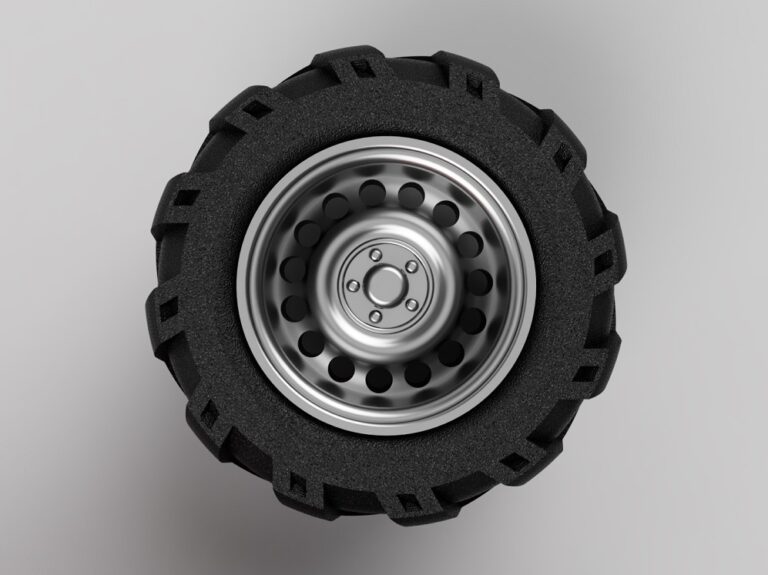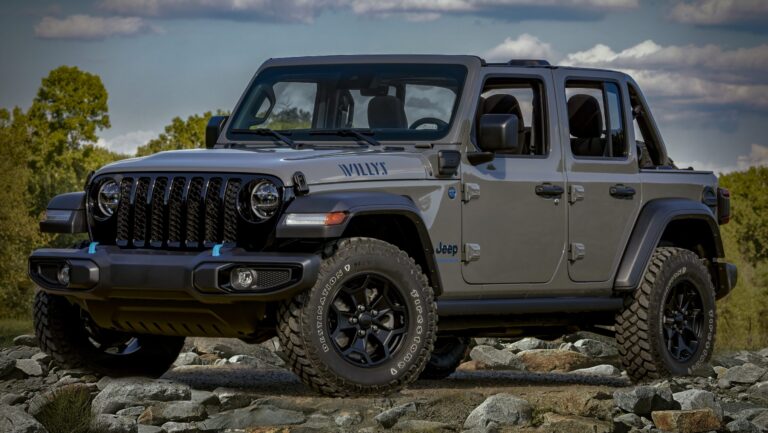1980s Jeep Grand Wagoneer For Sale: Your Comprehensive Buyer’s Guide
1980s Jeep Grand Wagoneer For Sale: Your Comprehensive Buyer’s Guide jeeps.truckstrend.com
In an era defined by bold statements and emerging trends, the 1980s Jeep Grand Wagoneer carved out a unique legacy. Long before the term "luxury SUV" became commonplace, the Grand Wagoneer pioneered the concept, blending rugged utility with unprecedented levels of comfort and sophistication. With its iconic woodgrain paneling, plush interiors, and robust four-wheel-drive capabilities, this vehicle wasn’t just a mode of transport; it was a status symbol, a family hauler, and an adventurer’s companion all rolled into one. Today, the 1980s Grand Wagoneer remains a highly sought-after classic, cherished for its timeless design, nostalgic appeal, and surprising practicality. If you’re considering adding one of these automotive legends to your collection or driveway, this comprehensive guide will equip you with the knowledge needed to navigate the exciting world of 1980s Jeep Grand Wagoneer ownership.
Why the 1980s Grand Wagoneer? A Timeless Icon
1980s Jeep Grand Wagoneer For Sale: Your Comprehensive Buyer’s Guide
The appeal of the 1980s Grand Wagoneer goes far beyond mere nostalgia. It represents a pivotal moment in automotive history, bridging the gap between utilitarian trucks and opulent passenger cars. Its continuous production run from 1963 to 1991, with the "Grand Wagoneer" designation appearing in the 1980s, speaks volumes about its enduring design and market relevance.
What sets the 1980s models apart? These years represent the peak of its luxury evolution, featuring standard power everything (windows, locks, seats), air conditioning, and often premium audio systems. The distinctive simulated woodgrain vinyl paneling, while a love-it-or-hate-it feature for some, has become synonymous with the Wagoneer’s identity and is a key factor in its classic appeal. Underneath the refined exterior lay a capable, body-on-frame SUV powered predominantly by AMC’s reliable 360 cubic-inch V8 engine, paired with an automatic transmission and Jeep’s legendary Quadratrac or later Selec-Trac four-wheel-drive system. For many, owning a Grand Wagoneer isn’t just about driving; it’s about experiencing a piece of American automotive heritage, making a statement, and enjoying a vehicle that still turns heads wherever it goes.
Understanding the Different Years (1980-1991)
While the overall design remained remarkably consistent, the 1980s saw a few subtle changes to the Grand Wagoneer. The "Grand Wagoneer" trim became the sole offering from 1984 onwards, signifying its position as the top-tier luxury model.
- 1980-1983: These years still offered a range of engines, including the AMC 360 V8 and sometimes the smaller 304 V8 or even a 4.2L inline-six. Transmission options included a 3-speed automatic. Quadra-Trac full-time 4WD was common.
- 1984-1991: From 1984, the AMC 360 V8 became the standard and only engine option for the Grand Wagoneer. The Chrysler-built Torqueflite 727 3-speed automatic transmission was standard. The Selec-Trac part-time/full-time 4WD system became common, offering more driver control. Minor exterior and interior refreshes occurred, but the classic silhouette remained. Later models (late 80s/early 90s) tend to have more modern amenities like fuel injection (from 1990), but the core character remained.
- Key takeaway: While specific years might have minor differences in trim or features, the core experience of a 1980s Grand Wagoneer is largely consistent, centered around the 360 V8 and its robust drivetrain. Later 80s models (1987-1991) often command slightly higher prices due to their generally improved features and slightly more refined nature.

What to Look For When Buying: A Buyer’s Guide
Purchasing a vintage vehicle requires a keen eye and a thorough inspection. Grand Wagoneers, while robust, are susceptible to age-related issues. Here’s a checklist of critical areas to examine:
- Rust (The Silent Killer): This is the number one enemy. Inspect the following areas meticulously:

- Rockers and Lower Fenders: Often the first areas to go.
- Tailgate: Prone to rust around the window and hinges, especially if the window motor is failing and trapping water.
- Floor Pans & Cargo Area: Check under the carpet.
- Frame Rails: Essential structural integrity check.
- Roof and Drip Rails: Water can pool and cause rust.
- Behind Wood Paneling: Moisture can get trapped.

- Engine & Transmission:
- AMC 360 V8: Generally durable, but check for oil leaks (common from valve covers, oil pan, and rear main seal). Listen for knocks, excessive smoke (blue smoke indicates oil burning), or strange noises.
- Transmission (Torqueflite 727): Check fluid level and color (should be red, not brown or burnt). Smooth shifting is key; harsh shifts or slipping indicate issues.
- 4WD System: Test both high and low range engagement. Listen for unusual noises from the transfer case.
- Electrical System: A common headache. Test everything: power windows (slow or non-functional motors are common), power locks, power seats, gauges, wipers, headlights, interior lights, and the HVAC blower motor.
- Interior Condition:
- Upholstery: Look for rips, tears, and excessive wear on seats and door panels. Original upholstery is desirable but often worn.
- Headliner: Sagging headliners are almost universal; budget for replacement.
- Dashboard: Cracks are common due to sun exposure.
- Wood Trim: Check for fading, peeling, or missing pieces.
- Suspension & Steering:
- Leaf Springs: Check for sagging, especially at the rear.
- Bushings: Worn bushings can lead to sloppy handling and noise.
- Steering Box: Excessive play in the steering wheel often indicates a worn steering box or linkage components.
- Wood Paneling & Exterior Trim: Assess the condition of the simulated woodgrain. Fading, peeling, or bubbling are common. Replacements are available but costly. Check chrome trim for pitting or damage.
- Tires: Ensure they are in good condition and are not excessively old (check the DOT date code).
- Documentation: Service records are invaluable, providing insight into the vehicle’s maintenance history. A clean title and clear ownership history are essential.
Restoration vs. Driver: Navigating Your Purchase
The condition of a Grand Wagoneer heavily influences its price and what you can expect from it.
- Project Car: These are typically the most affordable, requiring significant mechanical, body, and interior work. Best for experienced DIYers with a substantial budget and time commitment. Expect to pay for rust repair, engine/transmission rebuilds, and full interior/exterior restoration.
- Driver Quality: These are functional vehicles that start, drive, and stop, but will have cosmetic flaws, minor mechanical issues, and deferred maintenance. They are great for those who want to enjoy the Wagoneer immediately and tackle improvements over time.
- Good Condition: Well-maintained examples with minimal rust, solid mechanics, and a presentable interior and exterior. These can be used as regular drivers with confidence, though minor issues might still pop up.
- Excellent Condition: Very well-preserved originals or older restorations that show minimal wear. These are closer to show quality but still driven regularly.
- Concours/Show Quality: Flawlessly restored or exceptionally preserved original examples. These command top dollar and are typically trailered to shows rather than daily driven.
Where to Find a Grand Wagoneer For Sale
- Online Auction Sites: Bring a Trailer (BaT) and eBay Motors often feature well-documented Wagoneer sales, setting market trends.
- Classic Car Marketplaces: ClassicCars.com, Hemmings, AutoTrader Classics are great resources.
- Specialized Dealers: Several dealerships specialize in classic SUVs and particularly Grand Wagoneers, often offering restored or thoroughly vetted examples.
- Forums & Social Media Groups: Dedicated Grand Wagoneer forums (e.g., Wagoneer World) and Facebook groups are excellent for connecting with owners and finding private sales.
- Word of Mouth: Sometimes the best deals come from unexpected places. Let friends and family know you’re looking.
Ownership Costs & Challenges
Owning a vintage Grand Wagoneer is a rewarding experience, but it comes with certain considerations:
- Fuel Economy: Be prepared for single-digit MPG figures (typically 10-14 MPG on a good day). These V8s are thirsty.
- Parts Availability: Mechanical parts for the AMC 360 and Chrysler 727 transmission are generally available. However, specific trim pieces, certain electrical components, and pristine wood paneling can be harder to source or expensive. A thriving aftermarket and community exist, which helps.
- Maintenance Expertise: Finding a mechanic familiar with older carbureted engines and vintage 4×4 systems can be a challenge. Be prepared to learn some basic DIY maintenance or find a trusted specialist.
- Insurance: Consider classic car insurance, which often offers better rates and agreed-upon value coverage for vintage vehicles.
Tips for a Successful Purchase
- Get a Pre-Purchase Inspection (PPI): Unless you are an expert, pay a qualified mechanic specializing in vintage Jeeps or classic cars to inspect the vehicle thoroughly. This can save you thousands in unexpected repairs.
- Budget Beyond the Purchase Price: Always factor in immediate repairs, deferred maintenance, and potential upgrades. A good rule of thumb is to set aside 20-30% of the purchase price for initial sorting.
- Understand Your Skill Level: If you’re not mechanically inclined, a "project" car will quickly become a money pit. Be realistic about what you can handle.
- Join the Community: Connect with other Grand Wagoneer owners online. They are a wealth of knowledge for troubleshooting, parts sourcing, and general advice.
- Don’t Rush: The right Grand Wagoneer will come along. Be patient and disciplined in your search.
Concluding Summary
The 1980s Jeep Grand Wagoneer is more than just a classic SUV; it’s a statement, a testament to American automotive ingenuity, and a bridge to a simpler, yet more luxurious, era of motoring. Its unique blend of rugged capability, iconic styling, and surprisingly comfortable interior continues to captivate enthusiasts worldwide. While purchasing one requires careful consideration of its age and potential needs, the joy of cruising in a piece of rolling history, complete with its distinctive woodgrain charm, is an unparalleled experience. With careful research and a bit of patience, you can find the perfect Grand Wagoneer to embark on your next adventure, turning heads and sparking conversations wherever you go.
1980s Jeep Grand Wagoneer Estimated Price Table
Prices for 1980s Jeep Grand Wagoneers can vary wildly based on condition, mileage, originality, and location. This table provides a general estimate.
| Condition Category | Description | Estimated Price Range (USD) | Key Considerations |
|---|---|---|---|
| Project | Non-running, significant rust, major mechanical issues, incomplete, or requiring full restoration. | $5,000 – $15,000 | Requires substantial investment in time, parts, and labor. Best for experienced restorers or those with deep pockets and a clear vision. Often starts much lower depending on severity. |
| Driver Quality | Runs and drives, but has cosmetic flaws (rust spots, faded paint, worn interior), minor mechanical issues, and deferred maintenance. | $15,000 – $30,000 | Can be enjoyed immediately. Budget for ongoing repairs and improvements. Good entry point for someone who wants to tinker and upgrade over time. |
| Good Condition | Solid mechanics, minimal rust, presentable paint and wood paneling, clean but perhaps not perfect interior. Ready to enjoy with minor work. | $30,000 – $45,000 | Reliable enough for regular use. Might still have small electrical quirks or need routine maintenance items. A great balance of usability and classic appeal. |
| Excellent | Well-preserved original or an older, high-quality restoration. Minimal wear, all systems generally functional, show-worthy but still driven. | $45,000 – $65,000 | High-quality examples that have been well cared for. Expect a relatively hassle-free ownership experience compared to lower categories. |
| Concours/Show | Flawlessly restored to original specifications or exceptionally low-mileage, perfectly preserved original. Museum-quality. | $65,000 – $100,000+ | Top-tier examples. Often trailered to shows. Investment-grade vehicles where every detail is correct. Prices can exceed $100k for the absolute best, especially late-model "Final Edition" examples in pristine condition. |
Note: These are estimates. Prices can fluctuate based on market demand, specific year (later 80s often command more), engine/transmission originality, and geographic location.
Frequently Asked Questions (FAQ) about 1980s Jeep Grand Wagoneer
Q1: Are 1980s Grand Wagoneers reliable?
A1: When properly maintained, the AMC 360 V8 engine and Chrysler 727 transmission are known for their durability. However, being 30-40+ year old vehicles, they will require consistent maintenance and attention to age-related issues, particularly electrical systems and rust prevention. They are not as "turn-key" reliable as modern vehicles.
Q2: What is the fuel economy like?
A2: Expect poor fuel economy. Most 1980s Grand Wagoneers with the 360 V8 will average between 10-14 miles per gallon (MPG), depending on driving conditions and vehicle tune.
Q3: Are parts hard to find for these vehicles?
A3: Mechanical parts for the engine, transmission, and drivetrain are generally available through aftermarket suppliers and specialized vendors. Body panels, interior trim pieces, and especially the simulated woodgrain vinyl can be more challenging and expensive to source, but a robust enthusiast community and specialized parts suppliers exist.
Q4: Can I use a 1980s Grand Wagoneer as a daily driver?
A4: While some owners do daily drive them, it’s generally recommended for enthusiasts who understand the commitment involved. Their age means more frequent maintenance, lower fuel economy, and lack of modern safety features. For most, they serve best as weekend cruisers, secondary vehicles, or show cars.
Q5: Which year is the "best" to buy?
A5: There isn’t a definitive "best" year, as much depends on personal preference and budget. Many enthusiasts favor the later 1987-1991 models for their slightly more refined interiors, standard amenities, and the consistently available AMC 360 V8 and Selec-Trac 4WD. However, earlier 80s models offer the same iconic styling at potentially lower prices.
Q6: How much does a full restoration cost?
A6: A professional, high-quality, full restoration can easily cost anywhere from $50,000 to over $100,000, often exceeding the vehicle’s final market value for all but the absolute best examples. This includes bodywork, paint, rust repair, drivetrain overhaul, and interior restoration. It’s often more economical to buy an already restored or well-preserved example.
Q7: What are common rust areas to check?
A7: The most common rust areas include rocker panels, lower fenders (especially behind the wheels), the tailgate (around the window), floorboards, and the frame rails. Always check thoroughly, including under carpets and behind trim.





